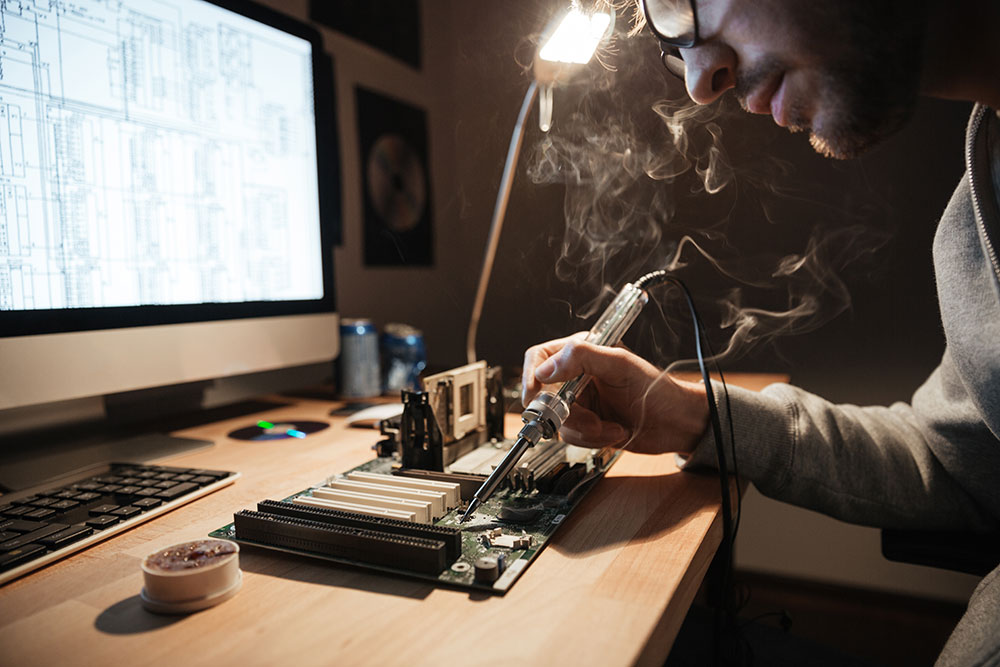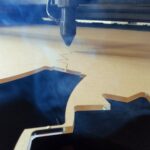Hello, soldering enthusiasts! Whether you’re a seasoned veteran or a novice just entering the captivating world of soldering, safety should always be your prime concern. Today, we’re honing in on a crucial safety aspect often overlooked: Ventilation.
What is ventilation, and why is it necessary in soldering?
Let’s start with the basics. Ventilation refers to circulating fresh air in an enclosed space and removing polluted air. Good ventilation can differentiate between a safe, healthy working environment and one riddled with health risks during soldering.
Why is ventilation so critical? Soldering releases fumes that, if inhaled, can have detrimental health effects. Prolonged exposure can lead to respiratory issues, among other health problems. Good ventilation reduces these risks by safely carrying the fumes away from your workspace.
Soldering, particularly indoors, involves releasing fumes that can be hazardous to your health if not appropriately extracted. The multifaceted risks range from mild to severe, often escalating with prolonged or high-level exposure.
The precise health effects can vary depending on the type of solder used. Traditional lead-based solder, for instance, releases lead particles into the air when heated. Inhaling these particles can cause lead poisoning, a severe condition that can damage the nervous, kidney, and reproductive systems. Even low levels of lead exposure can result in cognitive impairment, and these effects can be irreversible.
Another common solder type is rosin-core solder, which contains a flux that helps the solder flow and bond to the metals. When heated, this flux can emit fumes containing substances like colophony or rosin, a derivative of pine trees. These fumes can irritate the eyes and respiratory tract. Long-term exposure can cause occupational asthma or bronchitis, which manifests as persistent coughing, wheezing, and breathing difficulties.
Moreover, some types of flux may contain isopropyl alcohol and other solvents. These solvents can also cause respiratory irritation, headaches, dizziness, and even nausea when vaporized during soldering. They could have more severe health effects in high concentrations, like liver and kidney damage.
Finally, some soldering processes may generate ultrafine particles, which, when inhaled, can penetrate deeply into the lungs and possibly enter the bloodstream, leading to further health complications.
It’s crucial to understand that these health risks can accumulate over time, making even low-level but continuous exposure to solder fumes a severe concern. Therefore, proper ventilation, fume extraction, and personal protective equipment usage are paramount to maintaining a safe soldering environment.
Critical Elements of Effective Ventilation for Indoor Soldering
If you want to establish a safe indoor soldering environment, it’s essential to incorporate an effective ventilation system. A ventilation system should be a professional solder fume extractor, as it’s capable of safely whisking away the fumes.
There are a variety of options available, each with their strengths. For instance, a professional solder fume extractor is designed to capture and filter out solder fumes, making it one of the most effective tools. These devices come in various shapes and sizes, some even with adjustable arms that can be directed at the source of the fumes, ensuring maximum extraction.
Next, let’s discuss the role of personal protective equipment. No matter how efficient your ventilation system is, some fume exposure is likely. Here’s where PPE steps in. A safety mask or respirator can provide an extra line of defense by filtering out harmful particles before they can enter your respiratory system. These range from simple face masks, which provide minimal protection, to high-grade respirators, which can filter out even the smallest particles.
Remember, the aim is to combine these elements effectively to create a safe and healthy soldering environment. Different setups may require other solutions, so it’s essential to regularly assess and adjust your ventilation and safety measures as needed. Your health is always worth the effort!
Tips for Setting Up Ventilation for Indoor Soldering
Setting up proper ventilation can seem daunting, but with a few guidelines, it’s quite simple. First, position your soldering station near a window or vent. Install a professional fume extractor, we have fume extractors specifically designed for extracting fumes from soldering. Our website and support staff can assist you on the perfect set up for your exact requirements.
Remember, the goal is to prevent fumes from lingering in your workspace or being inhaled. So, experiment with your setup until you find a solution that efficiently clears your workspace of soldering fumes.
Ventilation is more than just a box to check on your soldering safety checklist; it’s vital to maintaining a safe and healthy workspace. So, next time you power up your soldering iron, take a moment to assess your ventilation. Your lungs and your future self will thank you!
If you have questions or concerns about which fume extractor setup is best for your work environment, don’t hesitate to contact us; we will assist you.








Recent Comments